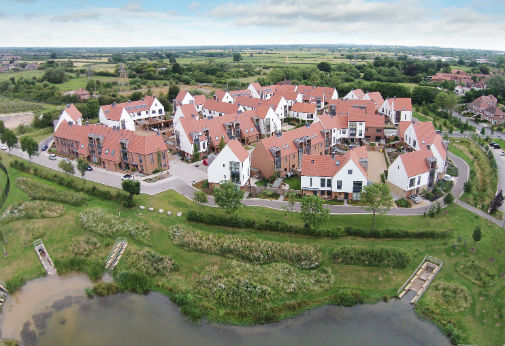Sustainable housing projects should rely less on resident behaviour to succeed
Posted on 6 February 2019

The report is based on the new sustainable housing community, Derwenthorpe, a new urban extension of York, England, which aims to create a socially and environmentally sustainable community ‘fit for the 21st century.’
The housing community, being developed by Joseph Rowntree Housing Trust (JRHT), has a number of features to encourage sustainable living, such as being situated near a number of public transport links, including a cycle path, and being home to a community garden and pop-up shop for organic food produce.
The report highlighted that built-in environmental measures are more successful at creating a sustainable development, than those factors that rely on residents understanding of new technologies or altered travel or consumer behaviour for example.
Equal stake
Research findings also demonstrate that in mainstream green communities, not all residents feel an equal stake in the sustainability of the community, and that community cohesion can help to achieve some of the more difficult aspects of reducing carbon footprints by supporting changes to individual behaviour.
The research team at the University’s Centre for Housing Policy interviewed residents at Derwenthorpe and used the Stockholm Environment Institute’s online environmental footprint calculator to understand individual carbon footprints across key household areas such as power usage, travel, food, shopping and leisure activities.
Outdoor space
Senior Research Fellow, Deborah Quilgars, from the University’s Centre for Housing Policy, said: “Our report showed that resident satisfaction was highest with regard to the design of the properties, which included high ceilings, large windows, potential to extend, and specially designed properties for those with disabilities and other health conditions.
“Green outdoor space, including ponds, a playground and large open spaces was also something that residents valued. Our report recommends that emphasis on design, space, and aesthetics of new developments should be incorporated into government-level directives.”
Lower power
Built-in features such as low-energy fittings, water restrictors, community heat and water system, and mechanical ventilation system meant that Derwenthorpe residents achieved a significantly lower power component of their carbon footprint compared to the York region, and indeed lower than a wider UK sample.
There were, however, reports of some systems not working as expected and the report highlights that improving understanding of how these systems work could help residents adjust to new technologies more successfully.
Improvements
Owen Daggett, JRHT Sustainability Manager, said: “The research has shown how schemes such as Derwenthorpe, with environmental and casual sustainability at their core, still have areas where they can improve.
“For JRHT the findings will help influence our future developments, and we hope that other housing developers can use our experience to benefit other communities across the UK.”
Creating a mixed-tenure development, which included homes for sale, social renters, and shared-ownership was well received by residents, particularly as the exterior design of the houses didn’t mark-out the different tenure types.
New ideas
Alison Dyke, Research Associate at the University’s Stockholm Environment Institute, said: “The biggest area for improvement, however, were the elements that relied on resident behaviour, particularly in food consumption and travel habits. Residents had a significantly higher food component of their footprint compared to other York residents.
“The community garden and organic pop-up shop were well supported, but didn’t alter residents’ food shopping habits.
“Limited car-parking spaces to encourage the use of public transport, was also a sore point with residents and many hadn’t or couldn’t alter their commute into the city for work and leisure, which may suggest that new ideas at a national level are needed to reduce travel, food and shopping footprints.”
